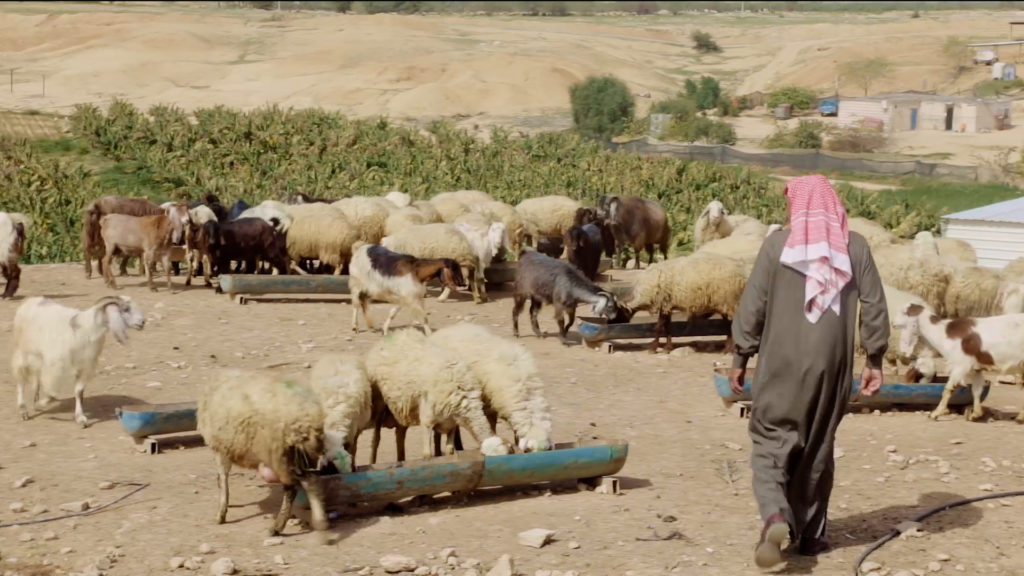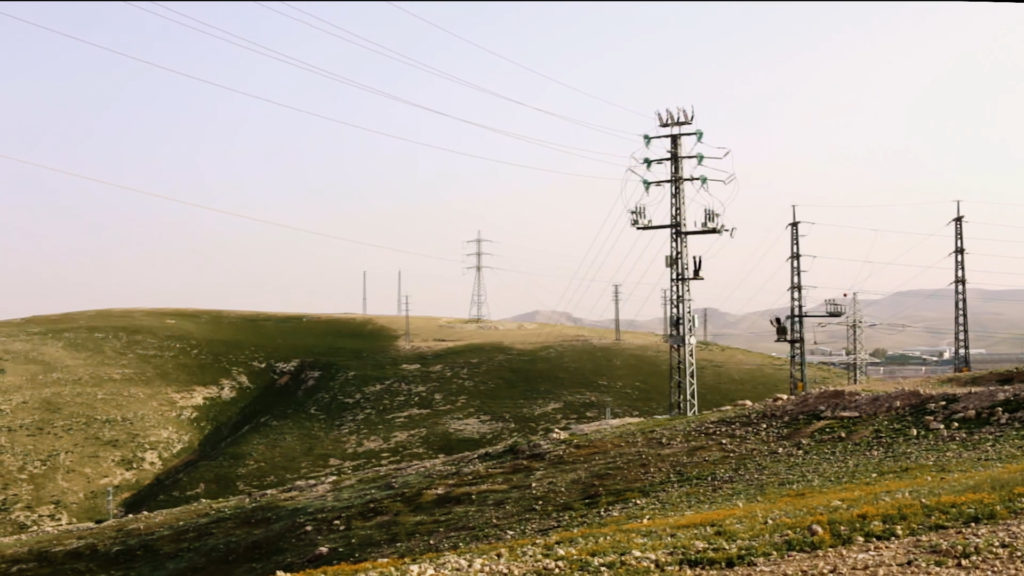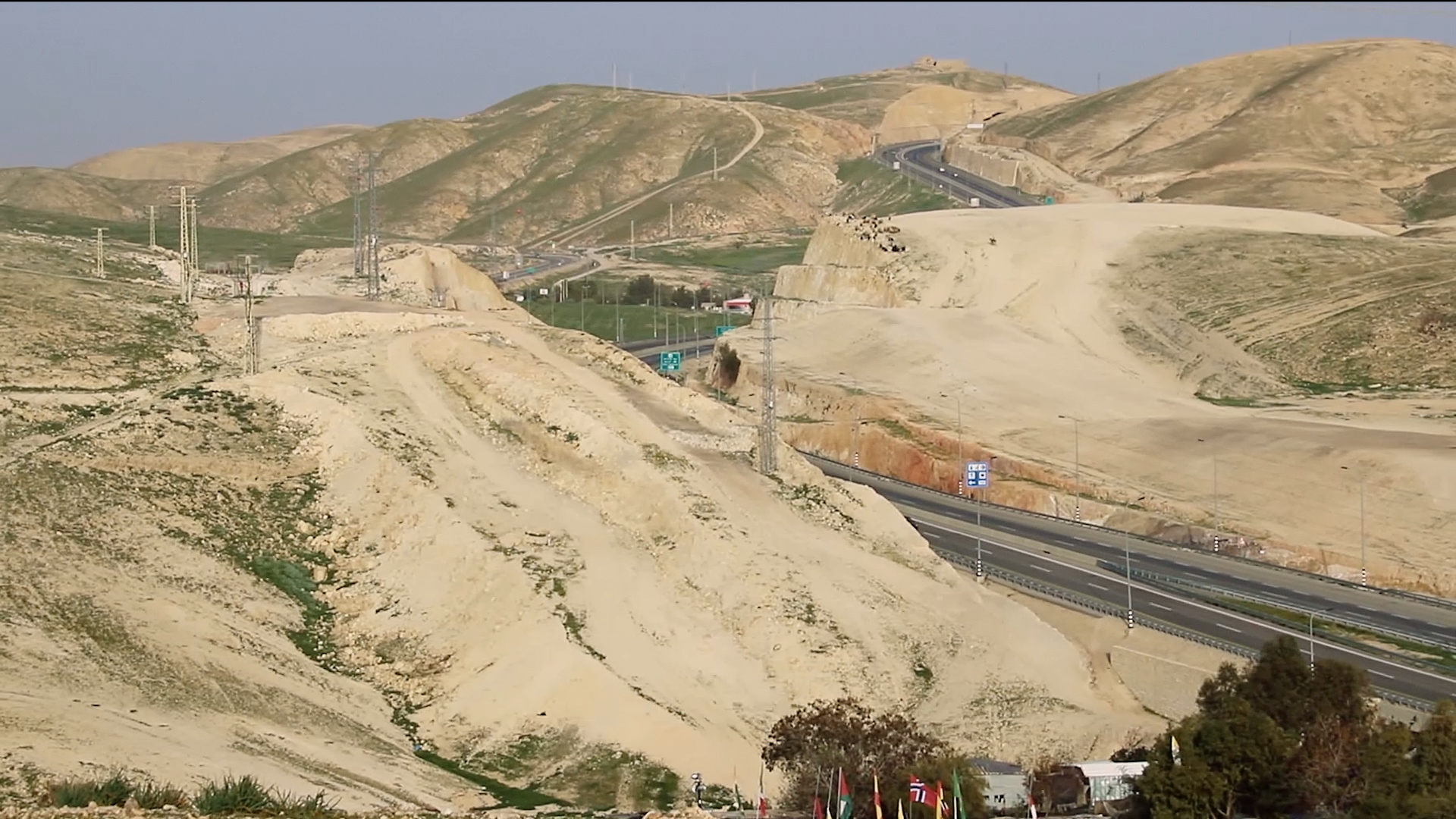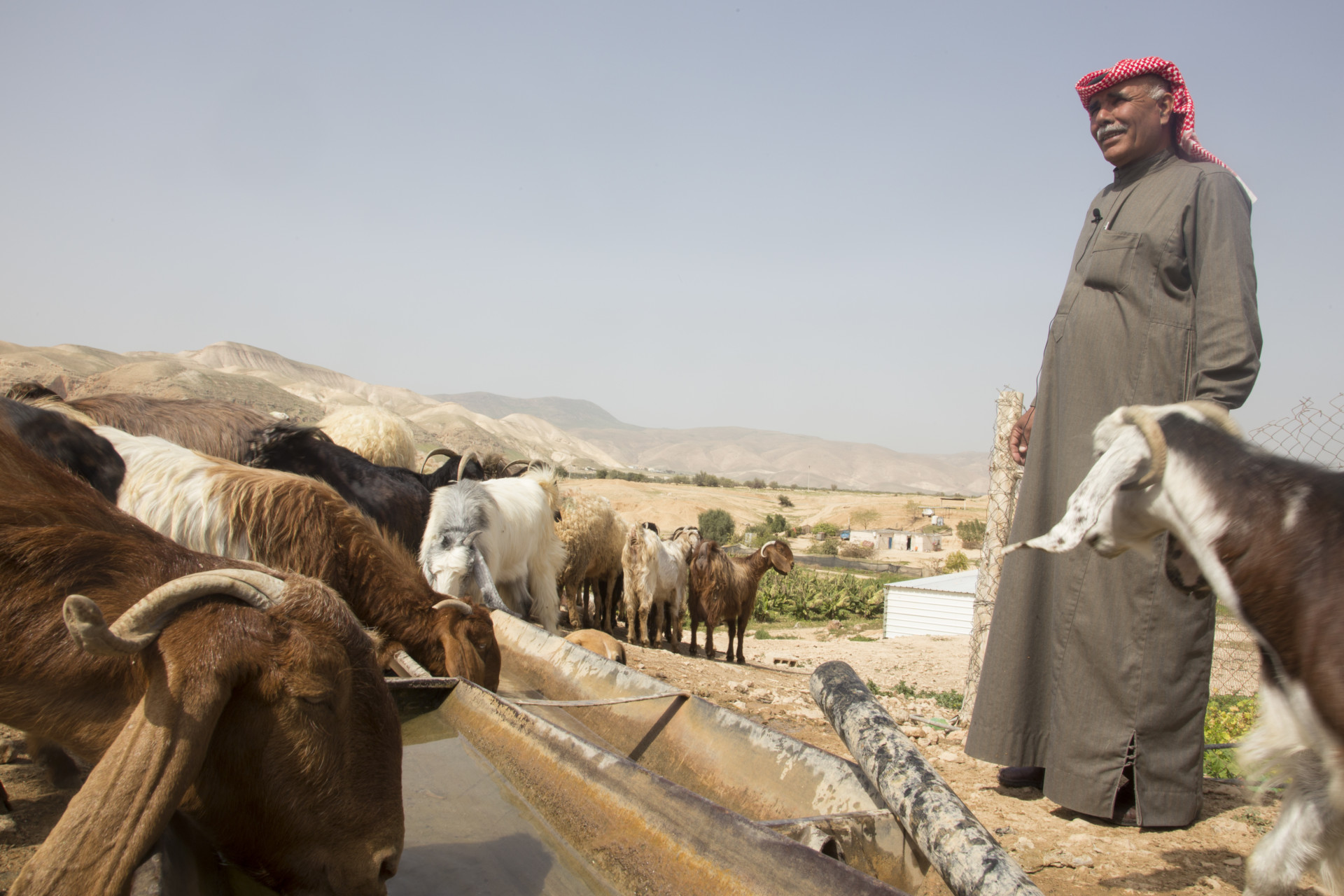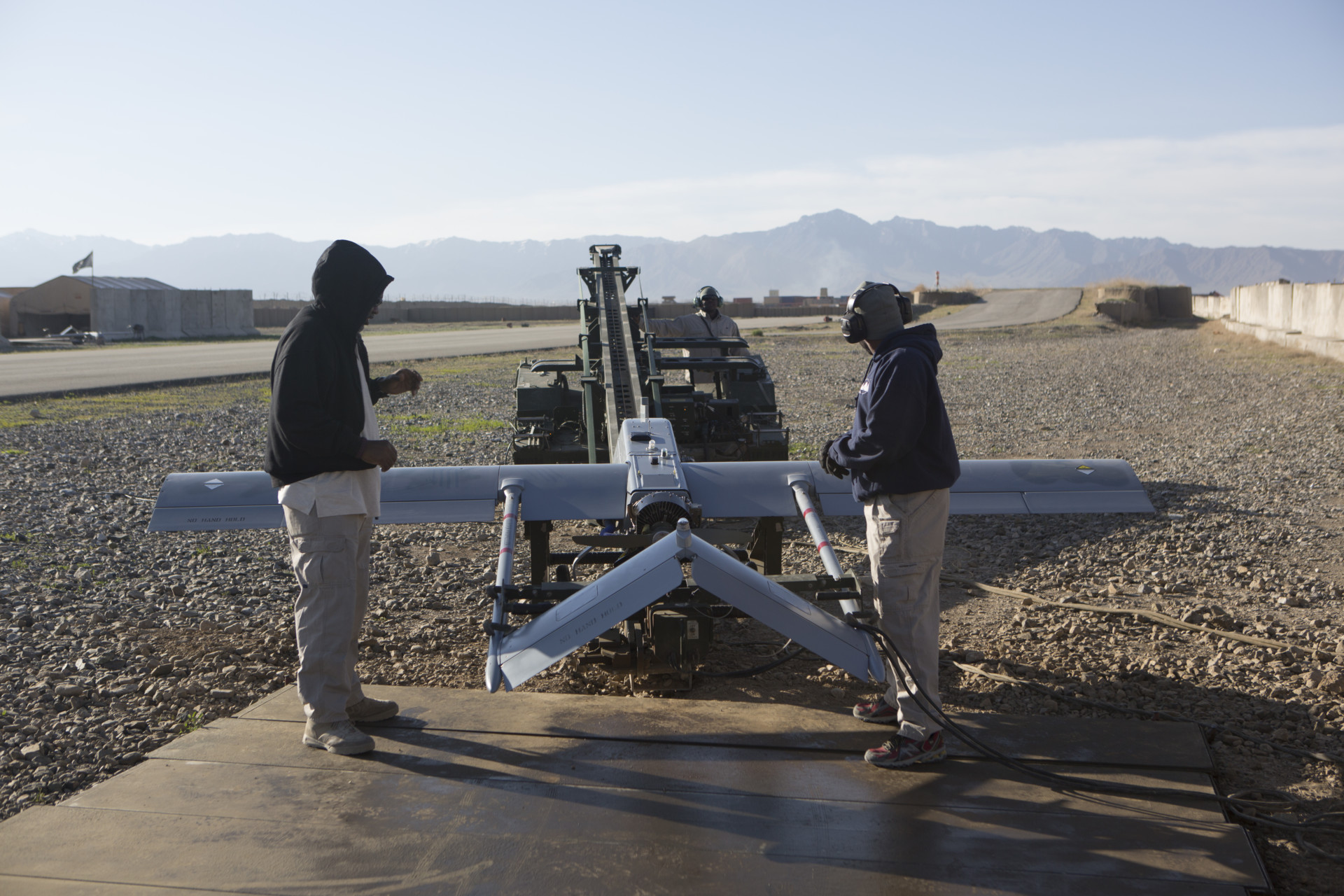What the Global War on Terror Really Accomplished
Twenty years after 9/11, America didn’t dismantle or destroy jihadist groups, but it fundamentally changed the way they think
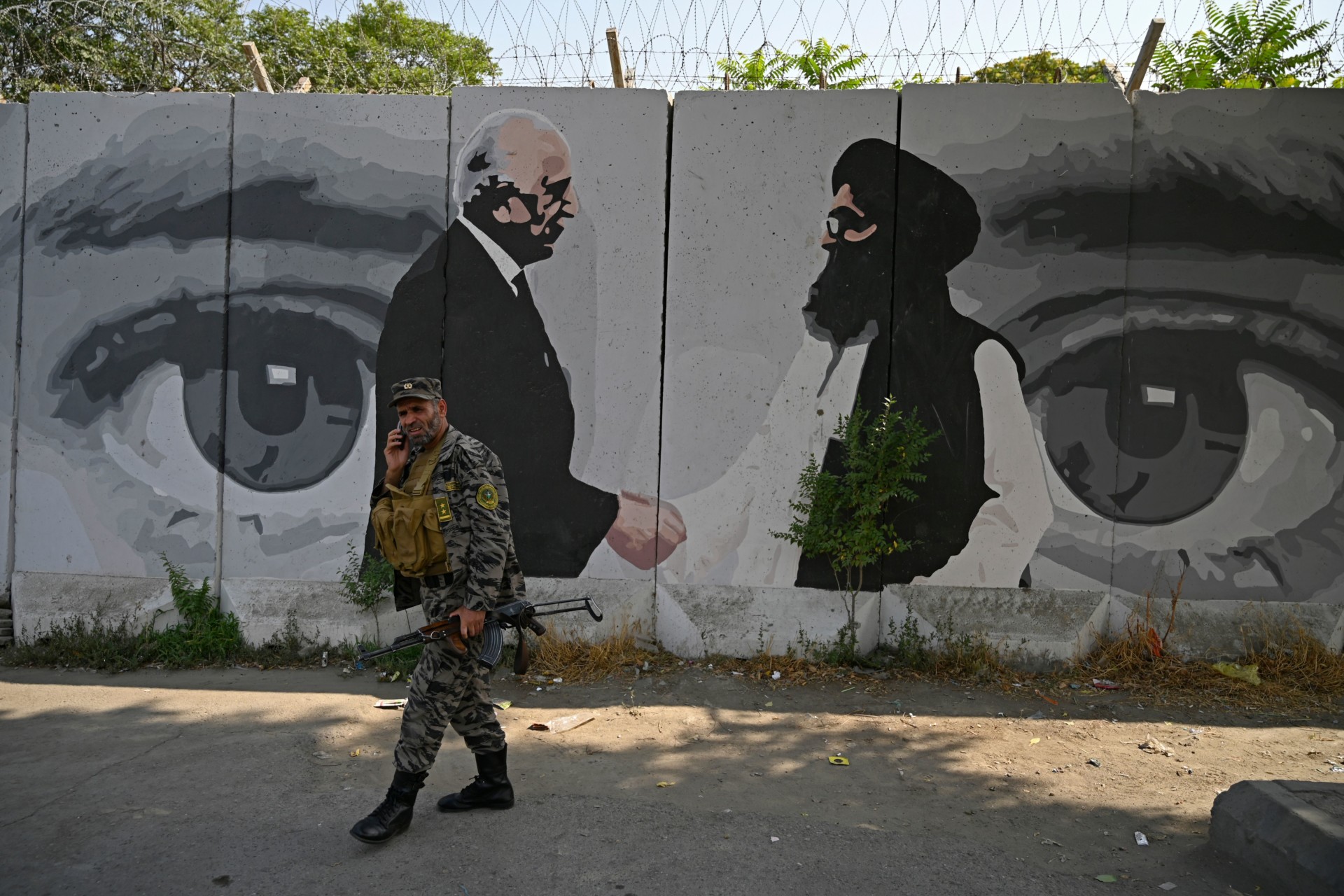
Iwas introduced to Maysara in 2015. I wanted to hear from him about his decadelong experience of being part of the Islamic State group, and how he spearheaded the fight against it in eastern and southern Syria the year before. Maysara bin Ali, better known by his nom de guerre Abu Maria al-Qahtani, was also interested in speaking to Syrians from the eastern region — of whom I am one — where he previously worked until the Islamic State captured it in the summer of 2014.
Maysara is a longtime jihadist who has operated in Iraq and Syria for the past two decades. In early 2001, he was moved by the killing a few months earlier of Palestinian fifth-grader Muhammad al-Durrah during the second intifada and joined a paramilitary unit established under Saddam Hussein for the “liberation of Jerusalem.” The volunteer army was made up of Iraqi civilians, and Maysara even signed up as a willing suicide bomber.
After the U.S.-led invasion of Iraq, he joined the insurgency in 2003, operating mainly in Mosul and nearby Qayyarah, around his birth town of Herarah. He joined al Qaeda in Iraq and rose through its ranks when it rebranded itself as the Islamic State of Iraq in 2006. Being from the prominent Iraqi tribe of Jubour and having received religious training under notable Iraqi clerics, he served in the organization as a cleric and a tribal engagement official.
I have been following Maysara since the early days of the Syrian conflict, initially because he commanded the militant group that dominated my hometown and other areas in eastern Syria for about three years, and later because he was at the forefront of historical events and conflicts that shook up jihadism from within. I was also researching how jihadists operate in tribal environments, and he fit the bill as both a jihadist ideologue and a social interlocutor.
A year before moving to Syria, he had been released from prison in Iraq for medical reasons. Out of prison, he resumed his jihadist activities and revived contacts, some of whom would become founders of other powerful jihadist factions within the Syrian rebellion. After a popular uprising broke out against the rule of Bashar al-Assad in 2011, he and a half-dozen jihadists operating in Iraq traveled to Syria and linked up with existing sleeper cells to establish Jabhat al-Nusra, or the Support Front, as a Syrian franchise of the Islamic State of Iraq.
Today, Maysara personifies a striking transformation within the world of jihadism. He fought the Americans in Iraq; he immersed himself in jihadist ideology and strategies and quickly ascended within a number of Iraq’s militant groups; he helped create a jihadist startup in Syria; and the two organizations he helped establish and lead became central to the dramatic changes that jihadist movements underwent in the past decade.
Yet, he has emerged as a leading voice in a nascent shift away from international terrorism toward localized militancy and governance. Many jihadists like Maysara have defied both the Islamic State and al Qaeda in favor of a new strategy that emphasizes the consolidation and retention of power regionally instead of waging a global jihad against the West. This is not because their ideology has softened: It is because they have learned that inviting overwhelming reprisals from modern militaries is the fastest way to forfeit their conquests, squander their influence and be forced to start all over again.
Twenty years after 9/11, America did not dismantle or destroy jihadist groups, but it fundamentally changed the way they think. Much of the shift in jihadist thinking has to do with the military campaigns launched by the U.S. as well as the popular uprisings that submerged jihadists in local conflicts and compelled them to focus on issues within their national borders.
Contrary to how some understand the U.S. withdrawal in Afghanistan, the lesson extremists are taking from the Taliban’s success is not simply that jihad works but that diplomacy and engagement are a necessary part of the process, which includes reassuring the West about external threats emerging from their areas. What can be gained from parlays in Doha is more significant and lasting than any terror attack.
In the past month, analysts noted with interest how the Taliban assisted U.S. forces at the Kabul Airport during the evacuation of American citizens and their Afghan allies. The Taliban practically held the door while the U.S. troops departed the country. What appeared bizarre and paradoxical was in fact entirely predictable to anyone who has studied how jihadism, shaped by the past 20 years, has reevaluated its priorities.
The question now is if the U.S. has fully appreciated this transformation. For all the overblown rhetoric about ending “forever wars,” the Biden administration still hews to a core counterterrorism doctrine. The global war on terror continues by stealth, with “over the horizon” missions on specified targets. We are now entering an era of invisible wars, premised on the same view of who and what the enemy is that was adopted within days of the 9/11 attack. In this view, jihadism is both static and transnational, and what stops its adherents from flying planes into skyscrapers and setting off bombs in Western cities is the lack of capacity to do so.
What makes Maysara’s case special is that he is a veteran jihadist who operated under both the Islamic State and al Qaeda but whose heterodox views are now prevailing within the jihadist universe.
Nearly two years before the world came to know about the Islamic State, he proposed to his group in late 2012 a plan to arrest the Islamic State’s now-dead leader Abu Bakr al-Baghdadi and one of his closest aides, Abu Ali al-Anbari, when the two were meeting with commanders and senior members of Jabhat al-Nusra. At the time the Iraqi group was trying to merge the two groups under one organization. Jabhat al-Nusra rejected the idea and the two organizations ultimately started fighting each other in eastern Syria and elsewhere. His plots against the leaders of the Islamic State were later corroborated by testimonies of senior Islamic State members jailed in Iraq, as well as in videos produced by the Islamic State on the group’s attempts to capture Deir ez-Zor and eastern Syria in 2013 and 2014. He told me he opposed the Islamic State even though Baghdadi offered him a higher position if he aligned with him.
It was not just a turf war. Maysara had the same ideological fights with the Islamic State and al Qaeda in Syria after 2011 as he did with the Islamic State of Iraq in 2006: they were over political and religious positions that undermine or distract from the real and urgent domestic cause. Sheikh Abdullah al-Miyahi, one of his religious mentors in Iraq, spoke about these ideological battles Maysara engaged in when the two were in an Iraqi prison in 2004, during Maysara’s first of two prison stints. The sheikh is currently jailed in Iraq for association with al Qaeda, and he attacked Maysara in a series of interviews on an Iraqi television channel. Despite his criticism of Maysara, he acknowledged that Maysara was particularly opposed to the “extremists” of al Qaeda in Iraq at the time, which is currently the Islamic State. Maysara differed with those over questions that came to define the Islamic State relative to other groups, such as takfir (the practice of labeling fellow Muslims as apostates) and collaboration with others after the declaration of an Islamic state.
Years later, now in northern Syria, Maysara would continue such debates but against al Qaeda and its ideologues in Syria in the same way he had done with the Islamic State of Iraq. A common denominator between the two situations, he would point out, was Abu Muhammad al-Maqdisi, a Jordanian jihadist ideologue linked to al Qaeda. Al-Maqdisi was party to the jihadist infighting in Syria, who eventually took a hard stance against the likes of Maysara who advocated for disengagement from al Qaeda and global jihad, accusing the group of “diluting” its jihadist character. Maysara blamed al-Maqdisi for the creation of the monster that would later become the Islamic State, pointing to his writings as a key source of radicalization among inmates.
Maysara is also not an isolated case: Such traditional views are coming back to the fore — and even dominating debates — because recent events like the defeat of the Islamic State’s territorial caliphate in Iraq and Syria and the recent victory of the Taliban in Afghanistan appeared to have vindicated this line of thought.
The success of groups that turned to local militancy instead of global terrorism have underscored the defects of ideologies that focused on waging ruinous global battles.
The best way to understand and assess the next phase of Sunni militancies is to view them through local insurgencies that predated al Qaeda
The localization of jihadist causes is here to stay, and the best way to understand and assess the next phase of Sunni militancies is to view them through local insurgencies that predated al Qaeda and the Islamic State. In a sense, jihadists are not as much converting to a new form as they are reverting to old insurgencies and norms, before al Qaeda hijacked and internationalized them.
The ideology of transnational jihadism targeting the West, “the far enemy,” as epitomized first by al Qaeda and more recently by the Islamic State, has been an aberration in the long history of Islamist militancy that is rooted in local grievances and conflicts. Groups linked to al Qaeda and the Islamic State can be traced to indigenous insurgencies or hotspots that preceded these organizations by decades, and these groups are now reconnecting with their old roots to further entrench themselves.
In Syria, for instance, Hayat Tahrir al-Sham and Ahrar al-Sham can be regarded as a second iteration of the Islamist insurgency in central and northern Syria in the 1970s and 1980s, even if they were created by veterans of the jihad in Afghanistan in the 1980s and Iraq in the 2000s. This connection is both ideological and organic. These Syrian groups have been guided primarily by the Islamist and jihadist ideas of Abu Musab al-Suri, who emphasized decentralization, pragmatism and deep ties with local communities above organizational rigidity and vanguard ideas and laid the groundwork for a “third generation” of jihadism after Afghanistan and Iraq. These Syrian groups have also been shaped by memories and events in the country, even among returnees who had left in the 1980s and became involved in battlefields in Afghanistan, Chechnya and Iraq. Many younger members and leaders of these groups also share family links and grievances with those involved in the old insurgencies.
The same goes for the Islamic State of Iraq, with roots in old extremist movements north of Mosul and in Kurdistan, and a particular brand of sectarianism that existed in the country, and was even promoted by Saddam’s regime, in the 1980s and 1990s. Maysara, for example, explained that the anti-American atmospherics promoted by the former regime in the 1990s and early 2000s “primed” Iraqis to join the jihad after 2003, and he himself relates to an older and indigenous militancy, in the north, through jihadist mentors from Iraq, more than to materials or individuals from outside the country.
The Taliban, too, are said to look at earlier incarnations of their movement in the 1980s anti-Soviet jihad, and before that in the Afghan Pashtun Islamism, as inspiration to be less dogmatic than they were in the 1990s. As Afghan journalist Ahmed-Waleed Kakar put it in Newlines last week: “Those considered moderate during the Soviet jihad consisted of traditionalists and monarchists keen on accommodating local context and norms.” The Taliban were among those traditionalists, he added. The Taliban will probably not change in any significant way, but the idea of how they seek to justify flexibility by looking back is illustrative of the broader point about older roots for contemporary militant groups, parallels to which can be found in Libya, Tunisia, Algeria, Egypt and Yemen.
These views existed before al Qaeda, and under al Qaeda as undercurrents, and their vindication means they can emerge as more grounded than the vanguard ideologies that dominated the scene in the better part of the past two decades, because they have an established basis in local realities across the region. The process of reverting to old roots started before the Arab uprisings in 2011, but the consolidation of such changes at the expense of transnational jihadism has taken time to play out.
Militants, thrust into sudden conflicts, needed time to acclimate and establish a footing in their given area. Al Qaeda and the Islamic State, meanwhile, provided a ready and functional framework for militants. Many of the conflicts in the region caught locals off guard and pushed them to embrace ideologies already locked and loaded for such armed conflicts. Ahmad Abazeid, a jihadism expert from Syria, attributed the weakening of Syrian militant groups relative to veteran jihadist groups like al Qaeda and the Islamic State to the lack of a jihadist or militant ideology grounded in the Syrian context, especially since the country had not seen conflict for four decades. A Syrian jihadist or militant ideology had to be developed in the diaspora, namely in Afghanistan and Iraq. These veterans came back to Syria as part of foreign-led jihadist leagues. It took a while for some of these groups to free themselves from the shackles of the veterans and seek to localize their operation, even if their priorities were shaped by local events and ideologies all along.
When Jordanian jihadist Abu Musab al-Zarqawi came to Iraq in 2002, to prepare for the fight against the U.S. invasion, he brought with him jihadist expertise and experience, gained through years spent in Afghanistan, that local groups lacked. The foreign jihadists had many such advantages, enabling them to ride the local waves and become leaders of men. Nevertheless, no jihadist ideology could succeed without a local support base that served as its core, and it is that core that eventually took over and “re-Iraqized” the group, in terms of ideology and direction.
The shift to local jihad was not consolidated earlier also because the jihadist splits took time to be crystalized. Take the differences between al Qaeda and the Islamic State. The two had strategic and tactical disagreements since the early days of the war in Iraq, as exemplified in the famous letter Ayman al-Zawahiri, then the deputy leader of al Qaeda, sent to al-Zarqawi in 2005 warning him about his vicious and sectarian tactics in Iraq. Later, after al-Zarqawi died, the Iraqi group ended its oath of allegiance to Osama bin Laden and formed the Islamic State of Iraq, declaring its Iraqi leader as “the leader of the faithful” who reported to no one. Despite such disagreements, however, the two sides maintained a civil discourse, and the Iraqi branch continued to respect and refer to al Qaeda’s leaders as their elders. This dynamic changed drastically after 2013, when quiet disagreements turned to loud schisms that polarized the jihadist scene and hardened existing differences among various strands of jihadism and militancy. This caused the sharp fragmentation of jihad for the first time despite differences existing for decades before.
What may have appeared as the recovery of al Qaeda after the popular uprisings and the death of bin Laden in 2011 was arguably an illusion: The very groups that caused the demise of al Qaeda and made it obsolete were the ones that made it look like it was still powerful because jihadists pretended and outsiders assumed that various groups in the region still deferred to it. It would take several years for this dynamic to become apparent, as the dust settled and new realities emerged. Al Qaeda under al-Zawahiri could not keep its own branches, permanently losing the key ones in Iraq and Syria. Other al Qaeda branches, such as in Yemen and Africa, pledged publicly that they would not allow their terrain to be used for attacks against the West. Such pledges were dictated by local imperatives, even if they had the al Qaeda stamp of approval.
Few today doubt that al Qaeda is moribund. The group functions largely through the so-called Hattin Committee (which U.S. officials mistakenly refer to as the Hattin Shura) that includes al-Zawahiri’s aides deputized in his chronic absence to deal with conflict resolution and mediation among jihadists particularly in places like Syria, and even these aides tend to be viewed suspiciously by many jihadists because they were based in Iran. Yet ground-level changes in jihadism and militancy, more than the dysfunctionality of its organization and absence of its leadership, can better explain why al Qaeda has little chance to reverse its fortunes. It is not a question of whether al Qaeda can field a more charismatic or functional leader than al-Zawahiri; instead, the idea itself no longer has the same utility it once had within the extremist circles. Unlike in the past, the jihadist leadership is contested, the movement itself is fragmented, and the vanguard ideas that once attracted a following under the symbolic leadership of bin Laden no longer resonate.
This does not mean the end of al Qaeda, however. Should the pendulum swing and the jihadist experiment in local governance fail, one can imagine the argument for attacking the “far enemy” gaining renewed support among some. This scenario could also happen if drones and bombs continue to drop on civilians in rural areas across the region in the name of counterterrorism. And no organization or movement is monolithic: It is entirely plausible that some individuals inspired by jihadists will continue to seek to carry out attacks against the West. But as a broader remit, it is unlikely that jihadists today will be as ambitious and daring as al Qaeda was in 2001. And this will likely prove to be the rule for the foreseeable future, for several reasons.
First, al Qaeda commands little respect among jihadists today. Al-Zawahiri has a narrow fan base among jihadists, and mostly because he was a companion and a successor to bin Laden. Al Qaeda had the advantage of being an early adopter of transnational Sunni jihadism, which provided them with the symbolism, through bin Laden and others who had just emerged victorious from the fight against the godless Soviets, to lead the Sunni jihadist movement for a while. This leadership role ended after 2011, with the death of bin Laden, the eruption of Arab uprisings and the subsequent jihadist infighting.
Second, jihadists teach their recruits about the need to focus locally not as part of their external propaganda but internally to their own audience. They dismiss the old “jihad of the elite,” of the vanguards and globalists, and advocate for the “jihad of the people,” which caters to local needs. The old way of bin Laden belonged to a different era, they say.
Third, they also take inspiration from their Shiite counterparts, who went through a similar global-to-local evolution. They did not target the West or seek a global caliphate, but they succeeded in controlling several Arab countries with the help of Iran. Within the region’s Islamist landscape, Shiite groups pioneered transnational terrorism and suicide bombing, especially in the 1980s after the Iran-Iraq war. Even though Sunnis were fighting the Soviets in Afghanistan, they would adopt suicide bombing and transnational terrorism only a decade later, through Palestinian Islamic Jihad, which learned directly from Hezbollah, and with al Qaeda, respectively.
Most important, though, is that the changes within jihadism are happening not just because the localized approach has benefits but also because the alternative carries immense costs. Jihadists have learned two lessons from the past 20 years which have had a moderating and sobering effect. One is that local fights are the priority and more can be achieved by focusing on the local environment, an opportunity that had not necessarily been available in the 1990s and early 2000s. The Arab uprisings were an opportunity that presented itself one decade into the U.S.-led war on terror, and involvement in these uprisings taught jihadists to moderate their views, limit their ambitions and ground their views in country-specific contexts. They now have to fight as insurgents operating and embedding within communities, rather than as vanguards preaching from ivory towers. The other lesson is to not mess with the U.S. if you can help it; in the case of Iraq and Afghanistan, jihadists fought the U.S. as an occupier not as the “far enemy” as such. The Taliban limited their fight to Afghanistan, while al Qaeda and the Islamic State took the fight to the West. The first succeeded and the other two failed.
This jihadist transformation is playing out at a time when the U.S. is similarly shifting its priorities away from counterterrorism and maximalist positions in foreign policy, to focus on domestic threats or on great power competition, which in turn reflect widespread attitudes in many circles within the U.S. This two-way change — in American priorities and in the jihadist outlook — will likely further reinforce the dynamics that deemphasize confrontation, not in the sense that the two sides will like each other but in that both have changed their priorities and have less time for each other.
As it did with the Taliban in Afghanistan, the U.S. will likely learn to live with the reality of jihadists controlling certain areas. Washington seems less willing to initiate campaigns against jihadists as a policy reflex, as the U.S. did in many places over the past 20 years to deny jihadists the ability to congregate and operate in certain areas, such as Afghanistan, Syria, Iraq, Yemen, Mali, Somalia and Libya. In many of these cases, the U.S. had no particular strategy beyond preventing radical forces from controlling areas merely because they were jihadists, and they left no room for engagement or compromise.
That approach slightly changed with the Taliban, when the U.S. did the unthinkable by engaging, negotiating and striking a deal with their foe of 20 years. This engagement endured under three administrations, with direct negotiations ultimately starting under a Republican administration and enforced under a Democratic one. Even more unthinkable were the scenes of the Taliban and U.S. fighters standing mere inches from each other outside the Kabul airport, coordinating their efforts through mediators.
But it is simplistic to view the persistence of jihadism as a defeat for the U.S.
Behavioral changes within jihadism are in part a product of the U.S.-led campaigns against global jihadism. The Americans may not have defeated or eliminated jihadism, but they helped transform it from being a vanguard movement committed to international terrorism into local actors responsive to both local and international imperatives who came to view as counterproductive the fight as previously defined by bin Laden and al Qaeda.
And that is the unheralded accomplishment of the war on terror, which, besides all the destruction and misery it caused, transformed jihadism. The U.S. achieved its core objective, notwithstanding the rhetoric about nation building, human rights and women’s emancipation, by tempering jihadism to be a threat only to local populations, not to Westerners. In this sense, the global war on terror was in fact won, just not on the high-minded terms in which it was fought.

